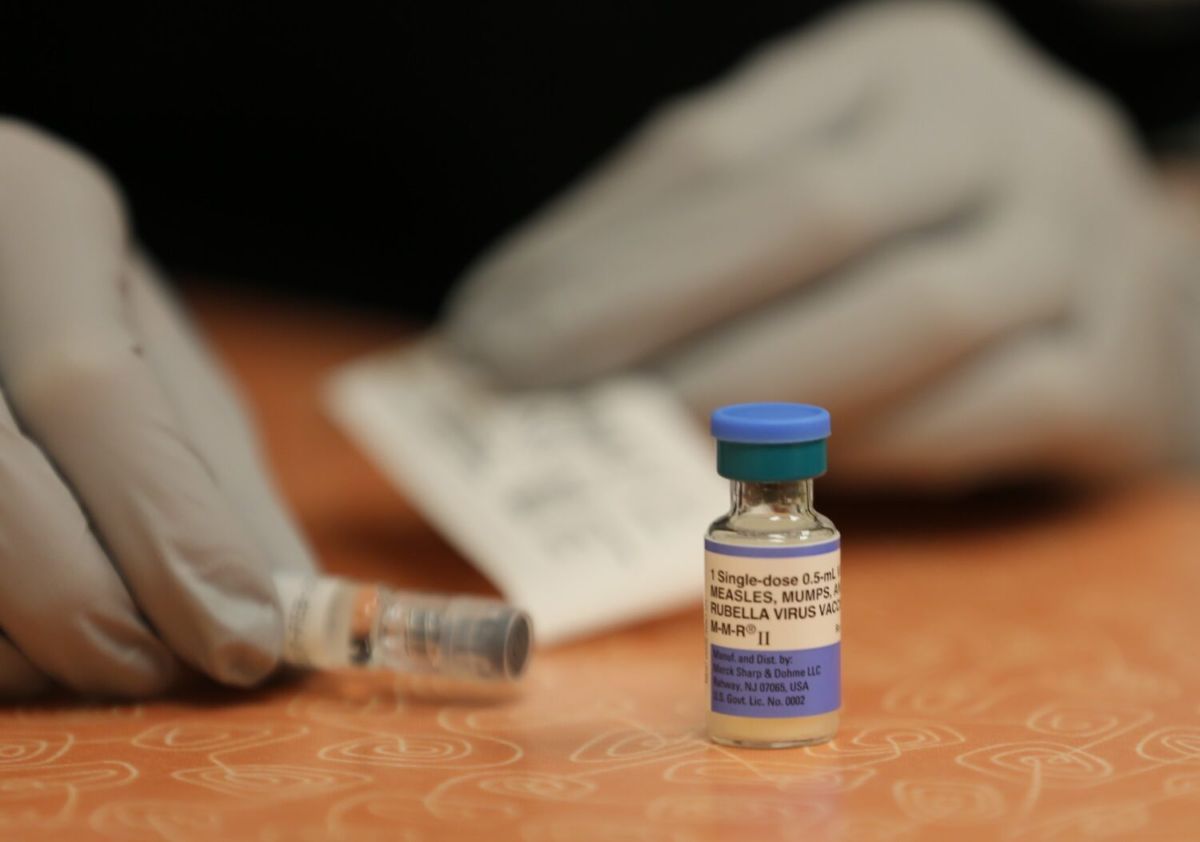More than 68,000 cards intended to help poor families yet to be activated
By Skylar Laird
SCDailyGazette.com
COLUMBIA — South Carolina families have just several weeks to claim millions of dollars in grocery assistance before the aid expires.
Nearly 537,000 debit cards were mailed to families statewide last August as part of a federal program started during the COVID-19 pandemic intended to help poor families buy groceries when their children aren’t getting fed at school. The last round of summer aid, providing $120 per child, went on debit cards that expire 274 days — or nine months — after they’re issued.
For cards that started going in the mail Aug. 14, that’s May 14.
As of April 12, more than 68,000 cards had yet to be activated, potentially leaving $8.3 million on the table, according to state Department of Social Services data.
Why it’s unspent is unknown. Possibilities include families losing their card, not wanting the aid, or not understanding what they received in the mail.
“’Use this to purchase food,’” Sue Berkowitz, an advocate for the poor, said she’s been telling parents who call Appleseed Legal Justice Center to ask about it.
The cards are still good. Parents are urged not to throw them away.
Using them to buy any eligible product, at any cost, will provide another nine months to spend the rest. They can be used to buy groceries at any retailer that accepts debit cards for the regular Supplemental Nutrition Assistance Program, or SNAP — what used to be known as food stamps.
The state does not track how much money is used once a card is activated, so the total amount of unused aid could be higher if families did not spend their whole allotment yet. However, at the cost of groceries these days, it’s expected that in the vast majority of cases, if a $120 card has been activated, it’s been consumed.
The cards mailed to South Carolinians last August — worth a total of $64.4 million — were the last of seven rounds of federal pandemic grocery aid meant to help feed students who normally eat free or reduced-price meals at school.
The first cards in the program went out in July 2020. In all, 2.26 million cards providing $1.04 billion worth of grocery aid have been sent to South Carolina families; 90% of them were activated, according to DSS data.
That suggests South Carolina’s rollout was relatively successful, and most of the people who needed the help got it, Berkowitz said.
“Most children got fed, and that is something that we should be very happy about,” Berkowitz told the S.C. Daily Gazette. “Let’s be glad that these benefits were there when folks needed them.”
South Carolina’s usage rate has been much higher than other states, said education policy consultant David Rubel of New York, who has been tracking the program’s implementation nationwide.
For example, Missouri had about $37 million in unused grocery aid in February, and Louisiana had $16 million earlier this month, just ahead of their cards’ expiration dates.
Why weren’t cards activated?
Some families may have intentionally rejected the help.
The cards were mailed to the homes of every student who ate free or reduced-price meals. The vast majority of public schools statewide qualify for a federal program allowing all students to eat for free regardless of their parents’ income.
Before the rules changed last fall, which made participation even easier, schools qualified for universal free meals if at least 40% of their students live in poverty. In a state where more than 60% of students meet that definition, qualifying is almost universal. Not all schools that qualify participate.
But for schools in that program, DSS had to send grocery aid debit cards to all of the students’ homes. Parents in higher income brackets may not have wanted to use them.
It’s unknown how many parents who ordinarily wouldn’t qualify for government assistance received the cards — or how much that factored into cards not being activated. But both DSS officials and Berkowitz believe it at least partly explains the non-use.
For parents in that situation, Berkowitz and her colleagues suggest they use their cards to help families in need, by buying groceries to donate to a local food bank, their schools’ food pantry or weekend backpack programs (if they have one), or a struggling family they know. The cards are non-transferable, meaning they can’t simply be passed along for someone else to use.
Berkowitz expects some people likely tossed the cards.
“I understand that, if they didn’t feel they needed it and were not under that kind of stress financially and struggling to feed their families, they weren’t going to need it or activate it,” Berkowitz said.
Other cards likely got lost in the shuffle, she said.
Since parents didn’t need to do anything to get the money, they might not have known what the cards were for or whether they were legitimate, especially with so many benefit programs happening in the first couple years of the pandemic.
The social services and education departments tried to get the word out through news interviews and social media posts, agency spokespeople said.
Reaching families who are most in need can be difficult, Berkowitz said.
Parents in poverty often work long hours and don’t pay for newspaper subscriptions, so they’re not going to see news articles or TV news segments, she said.
“We were going to miss people,” she said.
Outreach from school districts, which have more direct connections with families, was probably more helpful, Berkowitz said.
The state superintendent sent information to districts, and other officials in the state agency held seminars for administrators. Many districts then sent parents letters telling them about the program, a department spokesman said. How many is unclear.
Some cards may have gone to wrong addresses.
Both the social services and education agencies sent multiple reminders to families about updating their addresses to make sure that didn’t happen, DSS spokeswoman Connelly-Anne Ragley said in an email.
Cards that couldn’t be delivered went back to the vendor contracted to process them. In all, 8,435 cards over the last four years were re-issued, according to DSS data.
While the program was meant for summer grocery aid, for the last two years, the cards went out between mid- to late-August, weeks after most students in South Carolina were already back in class. That was due to the amount of work needed to collect data from school districts, determine eligibility and verify addresses, Ragley said.
Decision not to continue
House Minority Leader Todd Rutherford said the fact that South Carolina’s usage rate was so high shows that South Carolinians needed the grocery help.
He and other Democrats have lambasted Gov. Henry McMaster for refusing to participate in the new, permanent version of the program that starts this summer. Unlike the pandemic-era program, which the federal government fully funded, it requires states to chip in half of the administrative costs.
South Carolina was among 15 states that didn’t opt in by the Jan. 1 deadline. More detailed plans, with estimated costs, were due by mid-February. With those deadlines long expired, participating this summer was off the table.
Democrats tried unsuccessfully to convince McMaster to change his mind. Legislation asking Congress to extend the deadlines went nowhere.
McMaster has said he chose not to enroll because the assistance was a “COVID-related benefit extra.” He pointed to programs already in place to feed children over the summer, such as the state-run Summer Break Café and Seamless Summer, which together served 3.2 million meals to children across the state last year, according to the Department of Education.
Some senators considered putting money in the Senate’s $13.2 billion spending plan for the coming fiscal year to fund the program for summer 2025. But when it became clear the governor would not change his mind, they decided not to set aside the money, said Sen. Katrina Shealy, a Lexington Republican who supported signing up.
Senate floor debate began this week on the spending plan advanced by that chamber’s budget-writing committee. Senators could propose an amendment to fund the program, though it’s unlikely to pass. The House will get another opportunity to amend the budget next month.
A final spending plan for the fiscal year starting July 1 is still weeks away.
Rutherford said he’s still hopeful McMaster might change his mind before the next deadline for signing up, which is Jan. 1, 2025. Maybe seeing the benefits in other states and having more lawmakers from both parties urge participation will help, he said.
“We know the children are hungry,” the Columbia Democrat said. “The question is, what is the government doing about it?”
Skylar Laird covers the South Carolina Legislature and criminal justice issues. Originally from Missouri, she previously worked for The Post and Courier’s Columbia bureau.
S.C. Daily Gazette is part of States Newsroom, the nation’s largest state-focused nonprofit news organization.
Pandemic EBT (P-EBT) cards in SC
The federal program for extra grocery aid for students not in school evolved as the pandemic continued. The following are when cards started going out in South Carolina for each round:
July 6, 2020
- Total cards: 481,106
- Not activated: 27,826
- Usage rate: 94%
March 19, 2021
- Total cards: 506,649
- Not activated: 42,798
- Usage rate: 91%
Aug. 24, 2021
- Total cards: 111,772
- Not activated: 11,188
- Usage rate: 89%
Sept. 21, 2021
- Total cards: 3,254
- Not activated: 494
- Usage rate: 84%
July 17, 2022
- Total cards: 140,870
- Not activated: 10,719
- Usage rate: 92%
*Aug. 24, 2022
- Total cards: 481,834
- Not activated: 48,153
- Usage rate: 90%
*Aug. 14, 2023
- Total cards: 536,918
- Not activated: 68,281, as of April 12
- Usage rate: 87%, as of April 12
*Programs specifically for summer aid for K-12 students
Source: Department of Social Services










